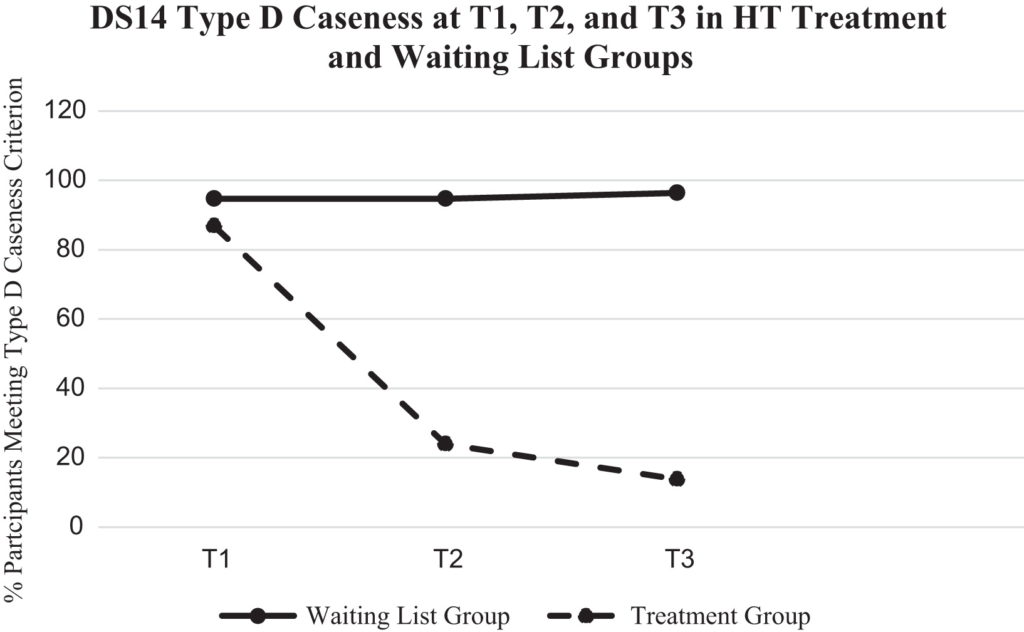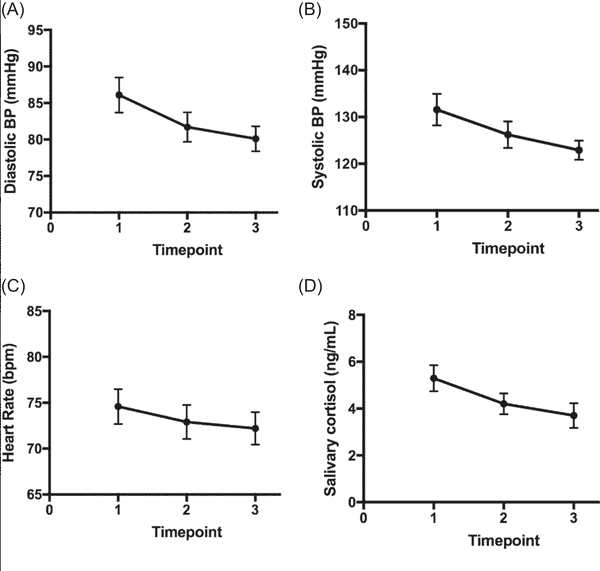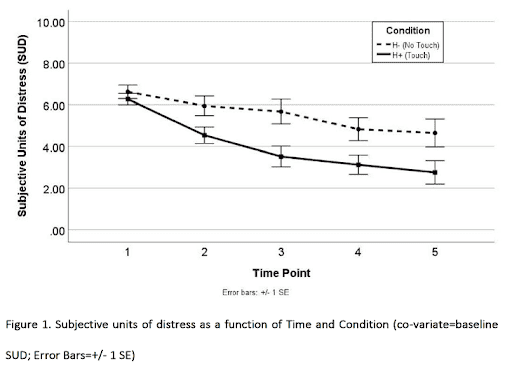
Manda Moxey-Baker
(BSD, Cert. Havening Techniques Practitioner, Cert. Neuro Linguistic Programming Practitioner, Cert. Life Coach, Cert. Yoga Teacher advanced (RYT 500), Cert. Meridian Energy Pathways, Cert. Permaculture, Dip. Art and Design, Cert. Illumination Engineer)
Havening is based on evolutionary biology. By applying recent knowledge in the field of neuroscience, we engage our innate biological systems for rapid, gentle and permanent healing.
In today’s article we will look into the history of Havening, including studies, research and health benefits.
What is Havening?
Havening is a technique that can relieve unwanted symptoms that are the consequences of traumatic or stressful events.
The Havening Techniques® is designed to de-traumatise a memory by changing the brain to remove its negative effects from our psyche and body. This effectively ‘puts us in a safe haven’ and frees us from unhelpful nervous system activation.
The methods were developed from evidence-based understanding of how trauma is neurologically encoded and subconsciously held in our biology, containing:
- Emotional
- Cognitive
- Behavioural
- Physiological components
Havening is described as a “compassionate medicine” tool by Dr. Robin Youngson, former New Zealand anaesthetic specialist.
Havening means to put in a safe place
It achieves this through specific soothing touch to elicit delta brain waves between 0.5 – 4 Hz (similar to deep sleep). Together with simple tasks that distract our cognitive thought processes, these affect a beneficial therapeutic outcome.
Havening was inspired by Energy Psychology methods that originate from the East. These include:
- Thought Field Therapy (TFT)
- Tapas Acupressure Technique (TAT)
- Emotional Freedom Techniques (EFT)
Havening is based on evolutionary biology. By applying recent knowledge in the field of neuroscience, we engage our innate biological systems for rapid, gentle and permanent healing.
What is the difference between Havening and other therapies?
Havening Techniques is a form of psychosensory therapeutic intervention that employs somatic and cognitive inputs.
Distinguishable from TFT, EFT, EMDR, Havening is neuroscience based. “The Touch” creates an innate sense of safety, and electroceutical delta waves in the brain (electrical stimulation) along with cognitive inputs, affect permanent change in the brain.
In other words, Havening involves application of sensory input to elicit an extra-sensory response for a beneficial outcome.
The relatively new field of psychosensory therapy, has been offered as a third therapeutic pillar by Dr Ronald Ruden.
Pillars are differentiated by the nature of their active ingredient to affect and modify our brain functioning. In psychotherapy it is talk/transference, in psychopharmacology it is pharmaceuticals (drugs).
Rather than focusing exclusively on symptoms, or making a diagnosis, Havening sees people from the perspective of understanding their personal challenges are the consequence of distressing events experienced.
Like Havening, psychosensory therapies such as Eastern-based TFT and EFT or exposure-based EMDR, activate the mind by a particular and distressing memory.
Other forms of psychosensory therapy, that do not focus on specific distressing memories, include:
- Yoga
- Meditation
- Neurofeedback
- Acupuncture
- Craniosacral Therapy
- Music Therapy
- Massage therapy
- Aromatherapy
RELATED — Aromatherapy: What is it and does it really work?
The Havening Techniques can be effective in isolation, and powerful when used in combination with psychotherapeutic methods.
How does Havening work?
In the Havening process, our mind is activated by a particular and distressing memory. With guidance, the brain has the potential to neutralise its negative emotional, cognitive and sensory components.
The practitioner guides the specific touch and psychological positive-emotion-priming tasks (cognitive distractions), which may include NLP-style methodologies, humming and eye-movements.
RELATED — Neuro-Linguistic Programming: Key Methods and Techniques (Part 1)
Signals generated by the touch reach the amygdala where distress was encoded. A chemical process is activated there, to permanently disrupt the neural pathway, effectively neutralising any distress associated with the memory.
There is no need to feel any distress for more than a few moments in a session for the process to effectively alleviate the current response to stressors and remove the symptoms.
History and origin of Havening
Havening was created and developed in the US by Dr Ronald A Ruden and Dr Steven J Ruden.
In 2001 the Ruden brothers set out to clarify the underlying biology of Energy Psychology (EP), specifically Tapping (TFT), as derived from traditional Chinese medicine.
Their own experiential evidence suggested this method could rapidly heal emotional and physical problems. They concluded it must have a basis in neurobiology. Yet it hadn’t gained wide acceptance in the West despite ease of use, and lack of side effects.
Working to understand the method in terms of modern neuroscience, they then sought to improve and expand on it. The result of years of research and clinical observation, is the Havening Techniques, grounded in neuroscience.
After thousands had already experienced the effects of Havening from Dr. Ronald Ruden’s New York practice, the first practitioners were certified in 2013. Since 2015, particularly experienced practitioners can become trainers in the techniques themselves.
This novel approach continues to grow, due to the increasing number of anecdotal reports. Today there are over 960 qualified practitioners.
Havening Techniques is used by mainstream physicians, psychotherapeutic and alternative practitioners, and coaches in clinics worldwide.
At the same time, the development of new psychological protocols for the Havening Techniques continues.
Notable individuals
Dr Ronald A Ruden, MD, PhD, creator, co-founder and co-developer of Havening Techniques. Ronald Ruden is an experienced internal medic and clinical researcher, with a Ph.D. in organic chemistry, and has been translating advances in neuroscience into methods for healing for over 30 years.
Dr Steven J Ruden, DDS, ICF/ACC, co-founder and co-developer of Havening Techniques. A Doctor of Dental Surgery, Steven Ruden is published in the area of dental phobias. A certified hypnotherapist, and consultant and coach in communication.
Paul McKenna, world renowned hypnotherapist, The Times of London, recognised as one of “the world’s most important modern self-help gurus”, has been a practitioner since 2013.
Other highly accomplished individuals in their respective fields:
- Dr. Kate Truit US, Clinical Psychologist & Neuroscientist
- Tony Burgess UK, published Psychologist, coach
- Dr Robin Youngson NZ, published Trauma therapist
- Harry Pickens US, recorded jazz pianist, author, coach
- Ulf Sandstrom Sweden, concert pianist, vocalist, coach
Research on Havening
Havening, being a novel psychosensory intervention, has had four empirical studies published, that refer to over 150 various studies.
These empirical studies have focused on:
- Mental and Emotional Health
- Trauma Resilience
- Subjective Distress
- Generalised Anxiety
- Depression
- Occupational Impairment
- Type D Personality
And found efficacy for:
- Augmenting resilience[1,2]
- Potential to change “psychophysiological illness-prone characteristics of Type D personality” (this affects ~ 30% of population)[3,4]
- Reducing symptoms of depression and generalised anxiety
- Improving occupational and social adaptation or adaptability
- Decreasing cortisol, blood pressure, heart rate
- Reducing subjective units of distress “in line with the role of nurturing touch and oxytocin in wellbeing and an adaptive processing of traumatic events”[1,5,6]
It was surmised that the specific nurturing touch and positive emotion-priming distractions, are each therapeutic elements in Havening protocols.
Health benefits of Havening
The Havening Techniques can neutralise ongoing impacts from a negative experience, build on our innate capacity for trauma, and increase our resilience.
It encompasses the ability to remove unwanted emotional experiences and introduce and incorporate a more positive emotional state.
Once associated distress from a memory is neutralised, pleasant aspects of a memory can become available and enhance our healing.
The Havening Techniques have been shown to help with:
- Distressing Memories
- Anger
- Fear
- Generalised Anxiety Disorder
- Post Traumatic Stress Disorder
- Phobias
- Chronic and Acute Pain
- Grief Processing
- Depression
RELATED — Introduction to: Depression
Benefits include:
- Reduction in subjective distress in response to an event[1]
- Reduction in symptoms of depression and anxiety[3]
- Reduction in PTSD symptoms[2]
- Increased sense of wellbeing[1]
- Increased trauma resilience[2,4]
- Improved nervous system regulation
- Strengthening of mind and body
- Supported grief processing
- Decrease in somatic symptoms
One trial examined the impact of HT on type D constituents of negative affect and social inhibition. Type D Scale-14 (DS14) was used to determine Type D Caseness Criterion in 125 participants (18+ years, 72 females, 53 males).[7]
Measures of Type D personality were taken at baseline (T1) and 24-hours (T2) and 1-month (T3) post HT intervention treatment.
Findings indicated the potential of HT to change the illness-prone characteristics of Type D personality.


From the same treatment group, forty participants received additional stress biomarker assessment of:
- heart rate
- blood pressure
- salivary cortisol
all of which have reduced post treatment.
Another ‘blind’ clinical trial, examining the efficacy of a single session of Havening intervention in 125 trauma-exposed participants (18+ years) assessed their resilience using the CD–RISC scale:
- Timepoint 1 (prior to intervention)
- Timepoint 2 (24 hours post-intervention)
- Timepoint 3 (one month post-intervention)
The administered Havening session was efficacious in significantly increasing CD-RISC scores 24 hours post intervention, and the results continued one month post treatment.[2]

Some individuals will see noticeable improvements after the first session
Another study, investigating the effects of Havening Touch on subjective distress, mood, brain function and wellbeing, involved 24 participants (21 females and three males, age range 18-47).[1]

After only a single session, the participants reported an improvement in their state of mind and mood.
Side effects and possible risks
As with most healing methods, the person seeking treatment must be a willing and capable participant. Each session of Havening works best on the problem most present and the engagement of the participant is meaningful to a beneficial outcome.
It is possible to experience side effects with Havening Techniques though potential risks are reduced with a qualified practitioner.
The possible side-effects include:
- in-session abreactions (crying, anger, physical movements)
- post-session lightheadedness
- worsening of symptoms or emotional numbing (happens rarely)[8]
The last two effects can be due to long-since-forgotten, but biologically active memories, that once brought to awareness can now be treated.
Havening is a fairly safe technique
For those who have experienced serious trauma or a psychological disorder, seeking a practitioner who is also a suitable mental health specialist is recommended.
Due to the electrochemical-nature of ongoing subconscious processing from a session, increased water intake can be beneficial after a session. Tiredness, and sometimes disturbing dreams, may be experienced, that could last for 12 to 24 hours.[9]
Related Questions
1. What is Self-Havening?
Self-Havening is self-application of Havening touch with cognitive techniques advised by a certified practitioner.
It is used for personal empowerment, healing, and nervous-system downregulation. It’s also beneficial in group, educational and work settings.
2. How long does it take for Havening to work?
It depends.
Havening can gently and rapidly produce a response and address mental and emotional problems from encoded distress in a single or a few sessions.
3. Is Havening the same as EMDR?
No. EMDR involves bilateral stimulation while focusing on a traumatic memory.
Havening involves neuroscience-informed touch and methods for a ‘mental safe haven’ to remove effects of distress without prolonged exposure.
If you would like to learn more about similar modalities and techniques, we suggest browsing our Mental Health section.
Amanda is a certified Havening Techniques® practitioner, working with people across New Zealand and overseas. Certified in Neuro-Linguistic Programming (NLP) and life coaching, Amanda is also an RYT 500 trained Yoga teacher, and is skilful in yoga nidra, meditation, breath, mindfulness techniques and advanced asanas guidance…
If you would like to learn more about Manda, see Expert: Manda Moxey-Baker.
References
(1) Sumich, A., Heym, V., Sarkar, M., Burgess, T., French, J., Hatch, L., & Hunter, K. (2022). The power of touch: The effects of havening touch on subjective distress, mood, brain function, and psychological health. Psychology & Neuroscience. 15(4). 332- 346.
(2) Hodgson, K. L., Carmi, L. H., Ruden, R. A., Carmi, M. A., & Cameron, D. (2023). Augmenting resilience to trauma: A parallel-group controlled trial of a psychosensory intervention. Open Science Framework: PsyArXiv Repository for the Psychological Sciences. Open Access Digital Archive, 1-8. https://doi.org/10.31234/osf.io/7jm2s
(3) Gursimran, T. Tom, D., Gould, M., McKenna, P., & Greenberg, N. (2015). Impact of a single-session of Havening. Health Science Journal. 95:1), 1-5. https://www.researchgate.net/publication/284023276_Impact_of_a_Single-Session_of_Havening
(4) Hodgson, K. L., Clayton, D. A., Carmi, M. A., Carmi, L. H., Ruden, R. A., Fraser, W. D. & Cameron. D. (2021). A psychophysiological examination of the mutability of type D personality in a therapeutic trial. Journal of Psychophysiology. 35(2). 116-128.
(5) Jakubiak, B. K., Feeney, B. C. (2017). Affectionate Touch to Promote Relational, Psychological, and Physical Well-Being in Adulthood: A Theoretical Model and Review of the Research. Personality and Social Psychology Review. 21(3), 228-252.
(6) Olivera-Pasilio, V., Dabrowska, J. (2020). Oxytocin Promotes Accurate Fear Discrimination and Adaptive Defensive Behaviours. Frontiers in Neuroscience. 14, 971, https://doi.org/10.3389/fnins.2020.583878
(7) Horwood, S., Anglim, J. & Tooley, G. (2015). Type D personality and the Five-Factor Model: A facet-level analysis. Personality and Individual Differences. 83, pp.50-54.
(8) Havening Techniques website. https://www.havening.org/about-havening/faqs
(9) Young, H.A., Cousins, A., Johnston, S. et al. Autonomic adaptations mediate the effect of hydration on brain functioning and mood: Evidence from two randomised controlled trials. Scientific Reports Rep 9, 16412 (2019). https://doi.org/10.1038/s41598-019-52775-5






